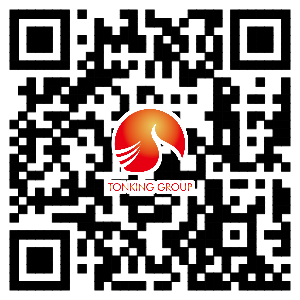Economy Benefits
Home
>Economy Benefits
Economic Benefits of PV Power Plants
- 1. ROIs of Different Installation Mode
- PV power plants are classified as fixed, horizontal single-axis tracking, tilted single-axis tracking, and dual-axis tracking power plants. Table 1.1 describes the return on investment (ROI) of each type of power plant.
Table 1.1 ROIs of different types of PV power plants
Note: The following table assumes that the investment on a fixed PV power plant is 7 RMB/W.No. Tracking Mode Investment (RMB/W) Investment Percentage of Tracking System (%) Investment Increase Compared with Fixed Installation (%) ROI Increase Compared with Fixed Installation (%) Support Tracking System Other Equipment Installation Total Equipment Investment Infrastructure Investment Installation Cost Sum 1 No tracking (fixed) 0.4 0.4 0.15 0.95 6.05 7 13.57 % 0 0 2 Horizontal single-axis tracking 1.2 0.3 0.2 1.7 6.05 7.75 21.94% 10.71% 15% 3 Tilted single-axis tracking 1.5 0.3 0.2 2.0 6.05 8.0524.84% 15.00% 20% 4 Tonking dual-axis tracking 1.8 0.05 0.15 2.0 6.05 8.0524.84% 15.00% 25%-30% - Based on table 1.1, we can conclude that the Dual-axis Tracking PV power plant takes the lead in terms of cost effectiveness, followed by tilted single-axis tracking, horizontal single-axis tracking, and fixed PV power plants. The Tonking dual-axis tracking PV power plant greatly reduces the payback period, and has unique advantages.
- 2. ROIs of Different Business Models
- The Tonking group specializes in technical innovation and financing, and has an expert installation team. To draw upon each others' strength and promote win-win, the group offers the following business models to cooperate with members involved in the industry:
Table 2.1 Responsibility division for different business models
No. Model Preparation Design Capital Construction Operation Maintenance Electricity Revenue Plant Owner Remarks 1 EPC Owner Tonking Owner Tonking Owner Owner Owner Owner 2 BT Owner Owner Tonking Tonking Owner Owner Owner Owner 3 BOT Owner Owner Tonking Tonking Tonking Tonking Tonking+Owner Tonking+Owner After the contract expires, the plant is transferred to the owner. 4 EMC Owner Owner Owner Tonking Owner Owner Tonking+Owner Owner This model applies to power plant renovation. 5 Solarcity Owner Flexible combination of a variety of cooperation modes 6 Multiple equity cooperation modes Owner Flexible combination of a variety of cooperation modes 1. EPC Model
In this model, the owner applies for the grid connection permission and land, and ensures that the pre-installation preparations are ready and that grid connection conditions are met. The Tonking group designs the power plant; builds civil work construction; purchases, installs, and commissions the equipment; performs the pilot operation; and takes responsibility for the project quality, safety, project period, and cost. The power plant will be transferred to the owner as a whole for follow-up operation.
Advantage: As the general contractor, the Tonking group can leverage its dual-axis tracking technology and other supportive products to greatly improve the electricity yield. A 15% increase on investment boost the higher electricity yield by 25%–30%.2. BT Model
In this model, the owner applies for the grid connection permission and land, and ensures that the pre-installation preparations are ready and that grid connection conditions are met. The Tonking group takes the responsibility for the design, financing, purchase, and construction, and transfers the power plant to the owner after acceptance. The owner pays back the total investment and a reasonable return to the Tonking group.
Advantage: The Tonking group provides financing support to ensure prompt project delivery.3、BOT Model
This an enhanced version of the BT model. Compared with the BT model, the BOT model allows the owner to sign an entrusted operation contract with the Tonking group.
Advantage: The Tonking group provides both financing support and modernized operation management.4. EMC Model
This model applies to the renovation of an existing power plant. Replacing a fixed PV system with the Tonking dual-axis tracking system can significantly increase the electricity yield. The Tonking group pays for the renovation cost, and shares the revenue increase with the power plant owner.
Economic benefit analysis: Taking a 10 MW ground PV power station with a 5-year operation period as an example, the total electricity yield is 11 million kWh before the renovation. After being renovated with the Tonking dual-axis tracking system at a cost of 1–1.5 RMB/W (total cost of 10–15 million RMB), the electricity yield increases by 25–30% (3.3 million kWh) to 14.3 million kWh per year. The electricity yield increase means significant revenue increase, and guarantees an appropriate payback period for the renovation investment.5. Solarcity Model
Leveraging its strong financing capability, Tonking group provides financial services such as PPP to owners.6. Multiple Equity Cooperation Modes
Tonking group also cooperates with owners in various equity cooperation modes to build joint venture PV power plants and achieve win-win for both parties.




